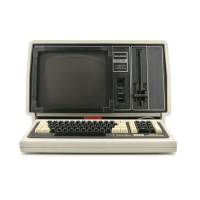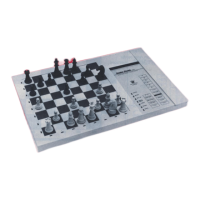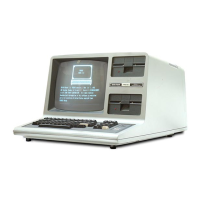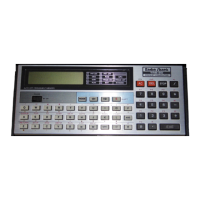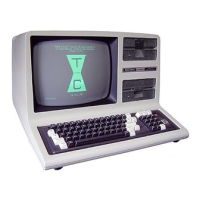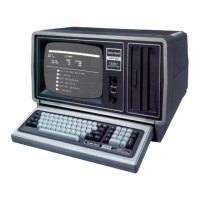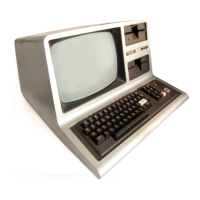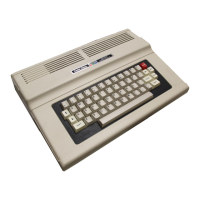SYSTEM
DESCRIPTION
The
primary functions
of
the
Color Computer are performed
by
five 40-pin Large
Scale
Integration
(LSI) chips plus
Random Access
Memory (RAM) and Read Only
Memory
(ROM). These five
chips are indicated on
the Block Diagram
(Figure 1)
by
CPU, SAM, VDG,
and
two
PIA's.
With
only
these
five chips plus
RAM, ROM, and a power supply, the
Color
Computer would operate and
provide
a
composite video
output.
However, to allow
communication with the
outside
world, I/O
interfaces
must
be
added.
The main
component of any
computer system is the
Central
Processor Unit
(CPU). It is the
duty of the CPU to provide
or
request
data and select the
proper
address for this data. In
addition, the
CPU is capable
of
performing
a
limited
set
of
mathematical and
logical operations
on the data.
ROM
has
the duty of providing the CPU
with a predefined set
of instructions. Without
ROM, the CPU would run
wild and
randomly execute
instructions. In normal operation, the CPU
jumps to the start
address in ROM after the reset
switch
has
been pressed, and then
performs the reset program to set up
all of the programmable
devices. Following this, the BASIC
instruction
set
residing in ROM is
in
control of
the
CPU.
RAM
provides storage for the programs
and/or data
currently
being executed.
In addition, this same
RAM
is
used to
generate
the video display.
Normally, no
conflict will be
observed
because the
program will use one
portion of RAM
and the
display
will use another.
During normal usage,
the BASIC
interpreter
located in ROM
will
control the
execution
of
programs
located in RAM.
A
central
component in the
Color Computer is the dynamic
RAM
controller chip
(SAM). This chip provides
refresh
and
address
multiplexing for the RAM. It also
provides all of the
system
timing and device
selection.
The
video display
generator
(VDG)
provides
virtually the
entire
video
interface on one chip, and
allows several different
alphanumeric and
graphic modes.
This
mode
of operation
of
the VDG is
controlled by
one of two
peripheral interface
adapters
(PIA's) used in the
Color Computer. With
this
information and RAM data,
the VDG
generates composite
video and
color information
for
the
modulator circuitry.
The
remaining circuitry in the
Color Computer is devoted
to
Input/Output
(I/O)
communication. The most
important part
of
this
circuitry is the
keyboard which allows the
operator to
enter information.
Other
I/O
circuits are provided to
allow
joystick inputs,
cassette input and output,
and
RS232
input
and output.

